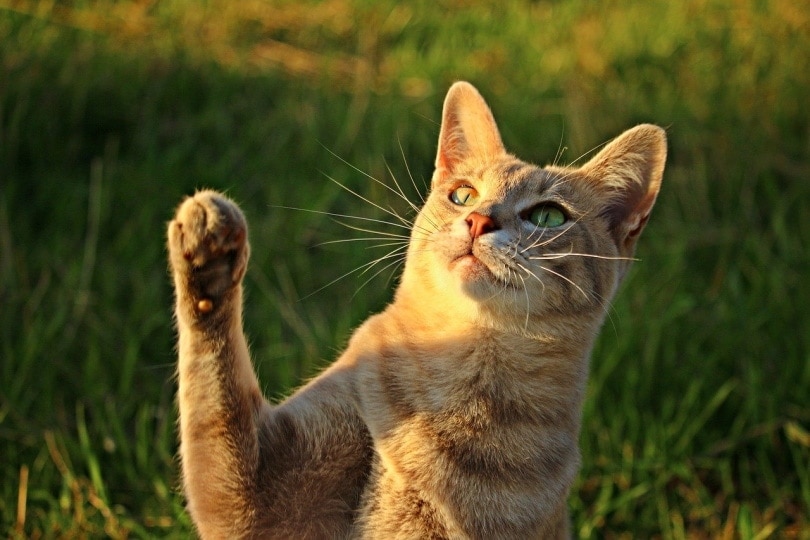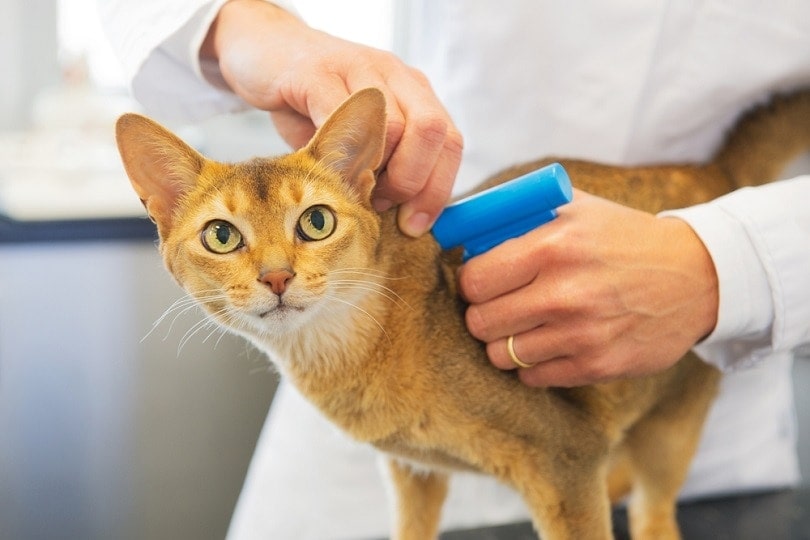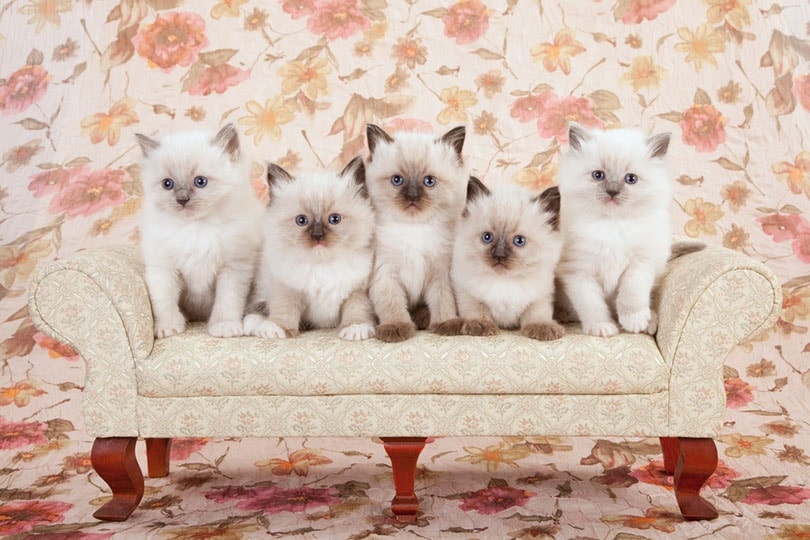How Many Whiskers Does a Cat Have? Vet-Reviewed Anatomy Placement & Purpose
By Jessica Kim
Updated on
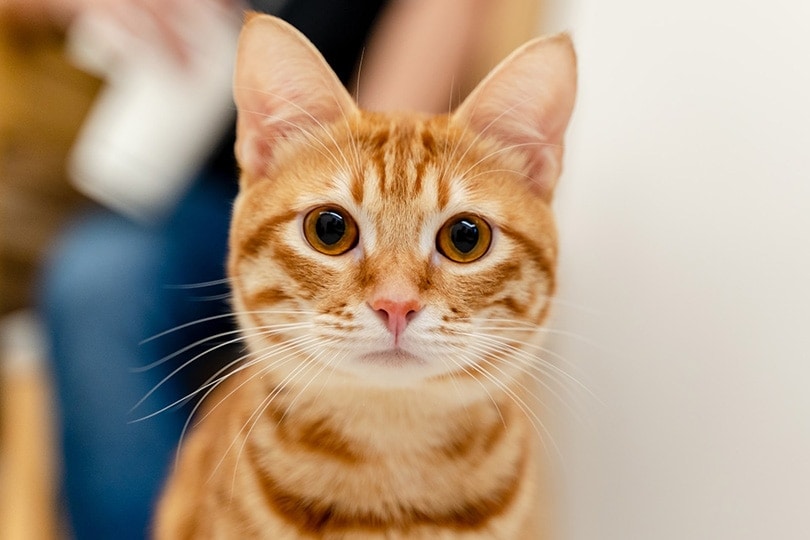
Whiskers aren’t just adorable facial features on your cat. They serve several functions to help a cat survive and navigate daily life.
Most cats have a total of 24 whiskers on their cheeks, but this number can change depending on breed. Here’s everything you need to know about these fascinating facial features.
What’s the Average Number of Whiskers a Cat Has?
On average, cats have 12 whiskers arranged in four rows on each cheek. However, whiskers aren’t just located on their cheeks. They also grow above a cat’s eyes and behind their front legs’ carpal articulation. Six to eight whiskers grow in each of these areas. So, a cat can have around 48 to 56 whiskers.
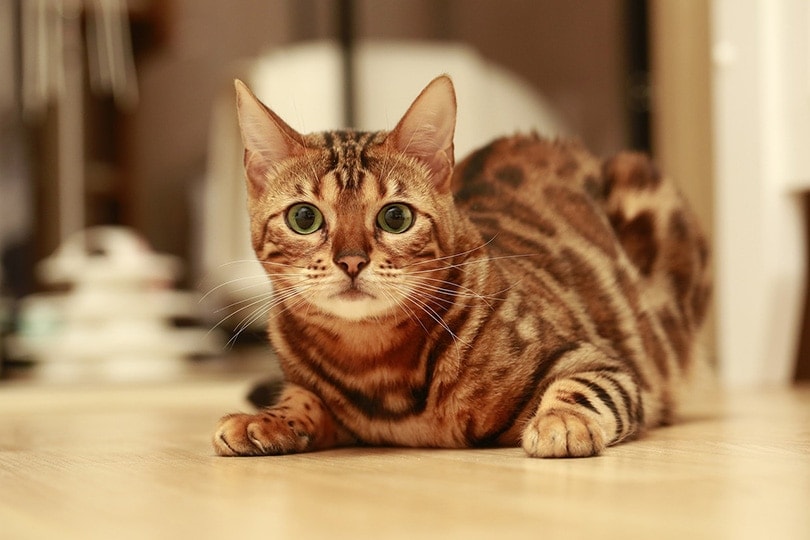
What Are Whiskers?
Whiskers are different from the rest of a cat’s fur. They’re thicker, and the roots are planted deeper in the skin than regular cat hair. They’re also coarser and more durable, and they’re more sensitive because they’re in spots with a lot of nerves and blood vessels.
For cats, whiskers are another part of the body that functions as a sense of touch. They’re just as sensitive as a human’s fingertips.
The Purpose of Whiskers
Cats use their whiskers for several purposes. They rely on the special hairs for day-to-day functioning and safely moving from space to space.
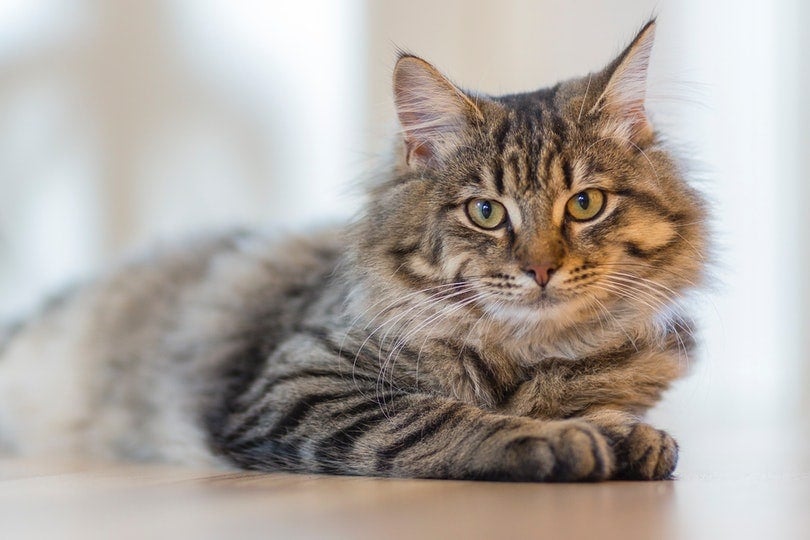
Reflexes
Every whisker is connected to a proprioceptor, which is a sensory receptor that communicates with the brain. The proprioceptor’s connection to the brain enables a cat to be aware of their body and movements. It’s responsible for the cat’s notorious quick reflexes. If it weren’t for whiskers, cats wouldn’t be able to land on their feet.
Contrary to popular belief, cats don’t heavily rely on their whiskers to stay balanced. As with most mammals, cats have ear fluid that helps them maintain their balance. Therefore, missing whiskers won’t necessarily make a cat unable to walk.
Spatial Recognition
Cats use their whiskers like how humans use rulers. The space a cat’s cheek whiskers take up is approximately the same size as the cat’s body. You might notice a cat poking their head in and out of a hole. This behavior indicates that they’re using their whiskers to determine if they can fit through the space.
When a cat approaches an opening, theiur whiskers feel around to determine if the area is big enough for them to pass through. If the whiskers can’t fit without bending, it’ll deter a cat from trying to enter.

Protection
The whiskers themselves don’t have nerves, but they’re rooted in sensitive and highly enervated deep pores. Therefore, when dust and debris land on the whiskers, cats will immediately shake their face to eliminate the particles. They’ll also know that the area isn’t safe for their eyes and will likely avoid moving forward.
The sensitive placements of the whiskers can protect cats from entering dangerous areas that can damage their eyes. If there are any obstructions, the whiskers will feel them first, and the cat can avoid the obstacles and protect their eyes.
Feeling Vibrations
Cats have excellent far-sighted vision but are not very good at seeing things close up. Therefore, they rely on their whiskers to compensate for their weak, near-sighted vision. Whiskers can sense changes in air currents that bounce back when they hit a solid object. This ability helps cats to navigate dark spaces and avoid bumping into objects.
The whiskers on a cat’s paws can also feel vibrations, which becomes helpful when prey is nearby. A cat may be unable to capture the prey within their weak near vision, but the prey will have difficulty bypassing the cat’s sensitive paw whiskers.
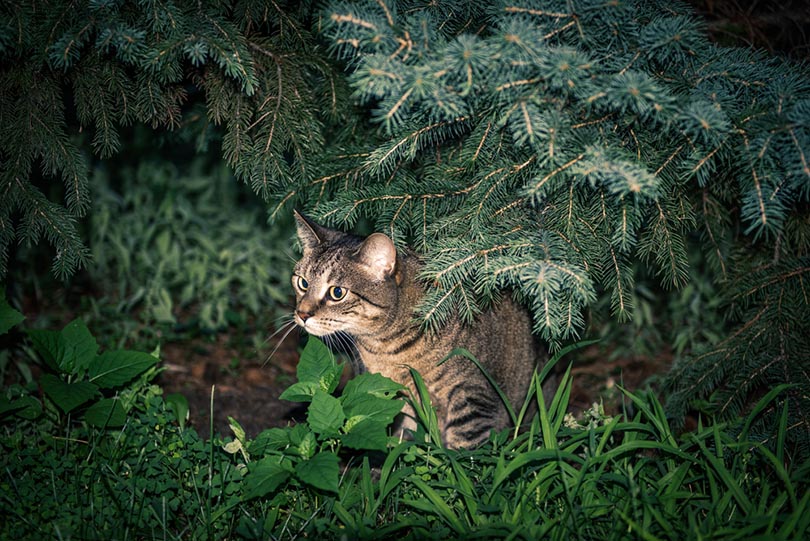
Expressing Emotions
Whiskers also move according to a cat’s feelings. For example, when the whiskers are relaxed, they reflect the cat’s relaxed mood. If they’re straight and pointing out, it indicates that the cat’s feeling alert or curious. When cats become irritated or angry, they pull their whiskers back against their face.
Should You Trim Your Cat’s Whiskers?
Whiskers naturally fall out from time to time. This occurrence isn’t anything to worry about, and they’ll usually grow back. However, it’s best not to trim a cat’s whiskers intentionally.
Whiskers serve essential functions, so altering them can cause many changes your cat must get used to, especially while navigating. Your cat may have difficulty with spatial recognition and may act clumsier or have slower reaction times during activities like hunting, playing, or climbing.
Cats are naturally curious and stealthy, and a lot of it has to do with their whiskers. Therefore, altering their whiskers can cause stress for cats because they won’t be able to do the usual cat-like things that they’re used to doing so effortlessly.
Conclusion
Whiskers are small and unassuming, but they serve an important role in a cat’s life. They help felines navigate the world and determine if prey is nearby. You might’ve just thought that they were cute facial features, but now you know that they’re very purposefully placed.
Related Reads:
- How Many Muscles Does a Cat Have in Each Ear? What You Need to Know!
- 6 Best Whisker-Relief Cat Bowls for Cats – Reviews & Top Picks
Featured Image Credit: Sam Chang, Unsplash


